Christophe Ropers
NLLB Team
BOUQuET: dataset, Benchmark and Open initiative for Universal Quality Evaluation in Translation
Feb 06, 2025



Abstract:This paper presents BOUQuET, a multicentric and multi-register/domain dataset and benchmark, and its broader collaborative extension initiative. This dataset is handcrafted in non-English languages first, each of these source languages being represented among the 23 languages commonly used by half of the world's population and therefore having the potential to serve as pivot languages that will enable more accurate translations. The dataset is specially designed to avoid contamination and be multicentric, so as to enforce representation of multilingual language features. In addition, the dataset goes beyond the sentence level, as it is organized in paragraphs of various lengths. Compared with related machine translation (MT) datasets, we show that BOUQuET has a broader representation of domains while simplifying the translation task for non-experts. Therefore, BOUQuET is specially suitable for the open initiative and call for translation participation that we are launching to extend it to a multi-way parallel corpus to any written language.
LCFO: Long Context and Long Form Output Dataset and Benchmarking
Dec 12, 2024



Abstract:This paper presents the Long Context and Form Output (LCFO) benchmark, a novel evaluation framework for assessing gradual summarization and summary expansion capabilities across diverse domains. LCFO consists of long input documents (5k words average length), each of which comes with three summaries of different lengths (20%, 10%, and 5% of the input text), as well as approximately 15 questions and answers (QA) related to the input content. Notably, LCFO also provides alignments between specific QA pairs and corresponding summaries in 7 domains. The primary motivation behind providing summaries of different lengths is to establish a controllable framework for generating long texts from shorter inputs, i.e. summary expansion. To establish an evaluation metric framework for summarization and summary expansion, we provide human evaluation scores for human-generated outputs, as well as results from various state-of-the-art large language models (LLMs). GPT-4o-mini achieves best human scores among automatic systems in both summarization and summary expansion tasks (~ +10% and +20%, respectively). It even surpasses human output quality in the case of short summaries (~ +7%). Overall automatic metrics achieve low correlations with human evaluation scores (~ 0.4) but moderate correlation on specific evaluation aspects such as fluency and attribution (~ 0.6). The LCFO benchmark offers a standardized platform for evaluating summarization and summary expansion performance, as well as corresponding automatic metrics, thereby providing an important evaluation framework to advance generative AI.
Y-NQ: English-Yorùbá Evaluation dataset for Open-Book Reading Comprehension and Text Generation
Dec 11, 2024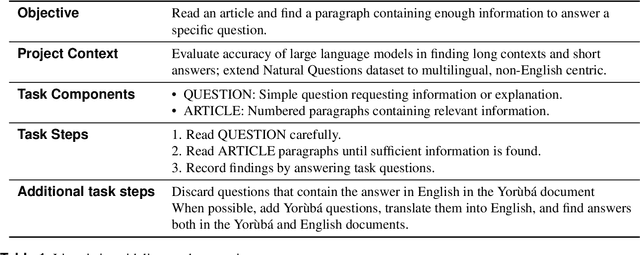

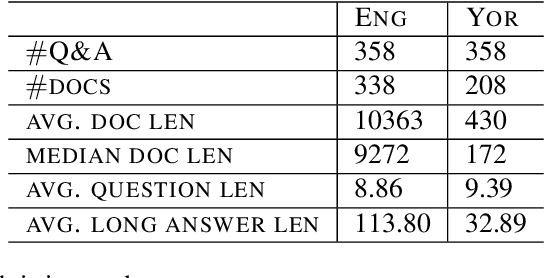
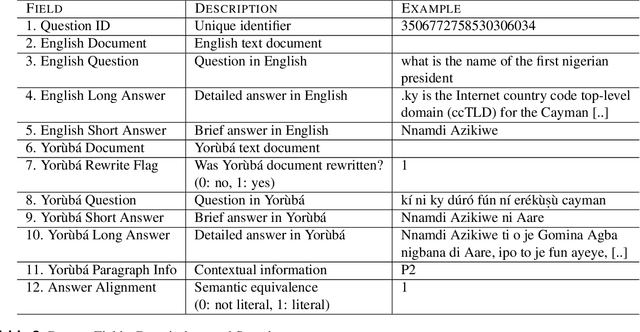
Abstract:The purpose of this work is to share an English-Yor\`ub\'a evaluation dataset for open-book reading comprehension and text generation to assess the performance of models both in a high- and a low- resource language. The dataset contains 358 questions and answers on 338 English documents and 208 Yor\`ub\'a documents. The average document length is ~ 10k words for English and 430 words for Yor\`ub\'a. Experiments show a consistent disparity in performance between the two languages, with Yor\`ub\'a falling behind English for automatic metrics even if documents are much shorter for this language. For a small set of documents with comparable length, performance of Yor\`ub\'a drops by x2.5 times. When analyzing performance by length, we observe that Yor\`ub\'a decreases performance dramatically for documents that reach 1500 words while English performance is barely affected at that length. Our dataset opens the door to showcasing if English LLM reading comprehension capabilities extend to Yor\`ub\'a, which for the evaluated LLMs is not the case.
2M-BELEBELE: Highly Multilingual Speech and American Sign Language Comprehension Dataset
Dec 11, 2024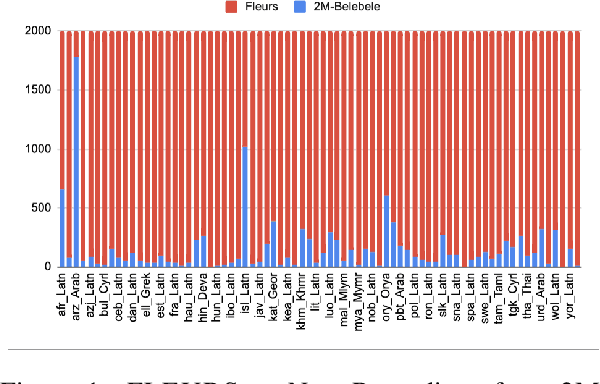

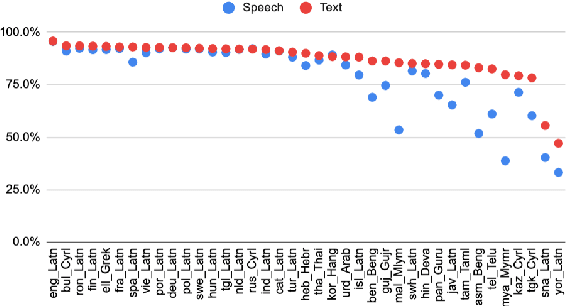

Abstract:We introduce the first highly multilingual speech and American Sign Language (ASL) comprehension dataset by extending BELEBELE. Our dataset covers 74 spoken languages at the intersection of BELEBELE and FLEURS, and one sign language (ASL). We evaluate 2M-BELEBELE dataset for both 5-shot and zero-shot settings and across languages, the speech comprehension accuracy is ~ 8% average lower compared to reading comprehension.
Large Concept Models: Language Modeling in a Sentence Representation Space
Dec 11, 2024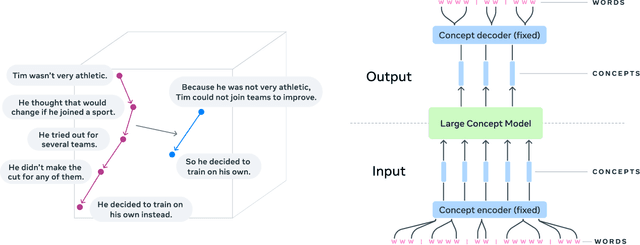

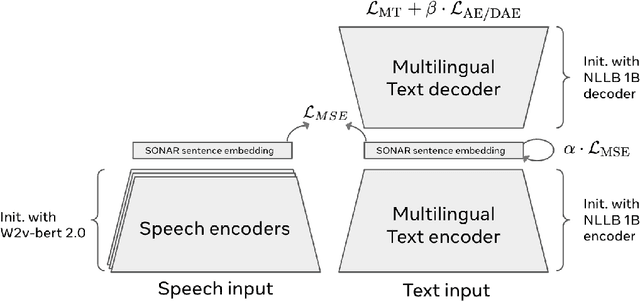
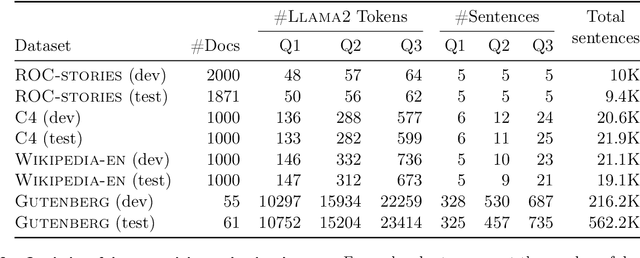
Abstract:LLMs have revolutionized the field of artificial intelligence and have emerged as the de-facto tool for many tasks. The current established technology of LLMs is to process input and generate output at the token level. This is in sharp contrast to humans who operate at multiple levels of abstraction, well beyond single words, to analyze information and to generate creative content. In this paper, we present an attempt at an architecture which operates on an explicit higher-level semantic representation, which we name a concept. Concepts are language- and modality-agnostic and represent a higher level idea or action in a flow. Hence, we build a "Large Concept Model". In this study, as proof of feasibility, we assume that a concept corresponds to a sentence, and use an existing sentence embedding space, SONAR, which supports up to 200 languages in both text and speech modalities. The Large Concept Model is trained to perform autoregressive sentence prediction in an embedding space. We explore multiple approaches, namely MSE regression, variants of diffusion-based generation, and models operating in a quantized SONAR space. These explorations are performed using 1.6B parameter models and training data in the order of 1.3T tokens. We then scale one architecture to a model size of 7B parameters and training data of about 2.7T tokens. We perform an experimental evaluation on several generative tasks, namely summarization and a new task of summary expansion. Finally, we show that our model exhibits impressive zero-shot generalization performance to many languages, outperforming existing LLMs of the same size. The training code of our models is freely available.
On the Role of Speech Data in Reducing Toxicity Detection Bias
Nov 12, 2024



Abstract:Text toxicity detection systems exhibit significant biases, producing disproportionate rates of false positives on samples mentioning demographic groups. But what about toxicity detection in speech? To investigate the extent to which text-based biases are mitigated by speech-based systems, we produce a set of high-quality group annotations for the multilingual MuTox dataset, and then leverage these annotations to systematically compare speech- and text-based toxicity classifiers. Our findings indicate that access to speech data during inference supports reduced bias against group mentions, particularly for ambiguous and disagreement-inducing samples. Our results also suggest that improving classifiers, rather than transcription pipelines, is more helpful for reducing group bias. We publicly release our annotations and provide recommendations for future toxicity dataset construction.
Linguini: A benchmark for language-agnostic linguistic reasoning
Sep 18, 2024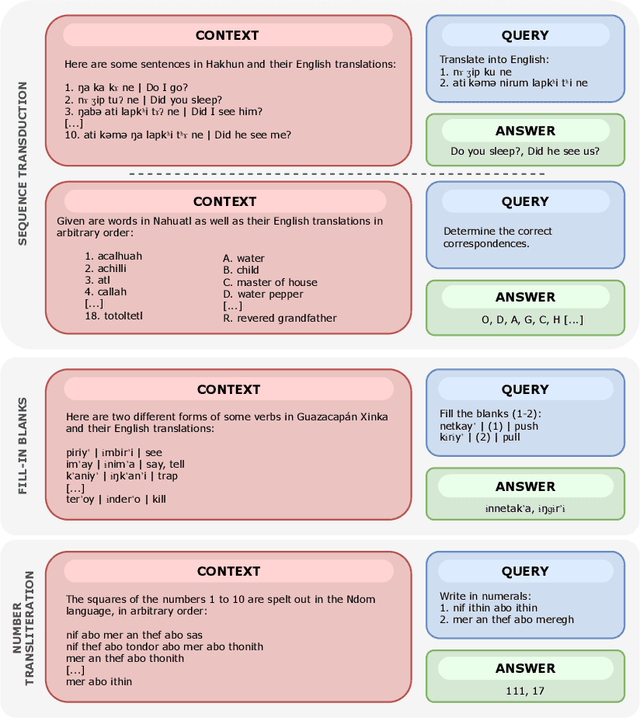
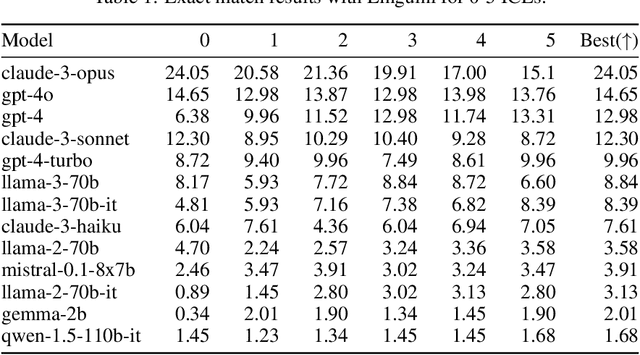
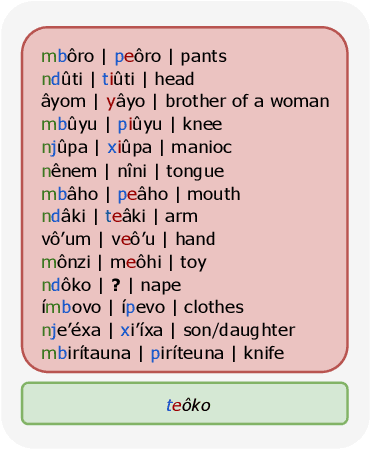
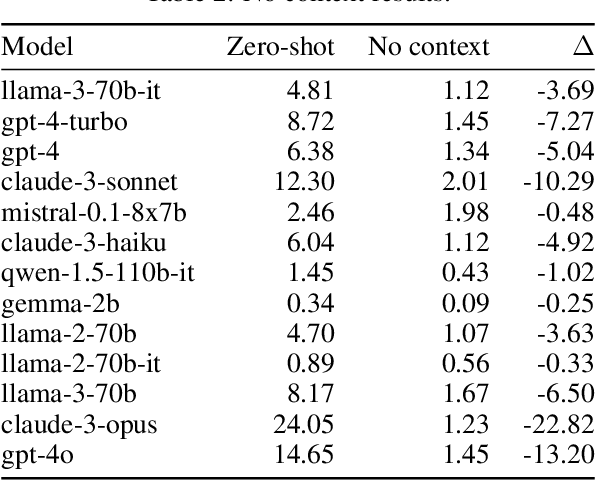
Abstract:We propose a new benchmark to measure a language model's linguistic reasoning skills without relying on pre-existing language-specific knowledge. The test covers 894 questions grouped in 160 problems across 75 (mostly) extremely low-resource languages, extracted from the International Linguistic Olympiad corpus. To attain high accuracy on this benchmark, models don't need previous knowledge of the tested language, as all the information needed to solve the linguistic puzzle is presented in the context. We find that, while all analyzed models rank below 25% accuracy, there is a significant gap between open and closed models, with the best-performing proprietary model at 24.05% and the best-performing open model at 8.84%.
Towards Massive Multilingual Holistic Bias
Jun 29, 2024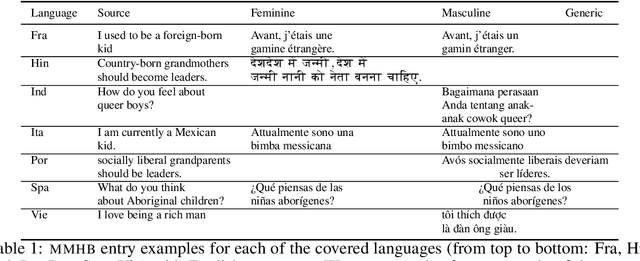

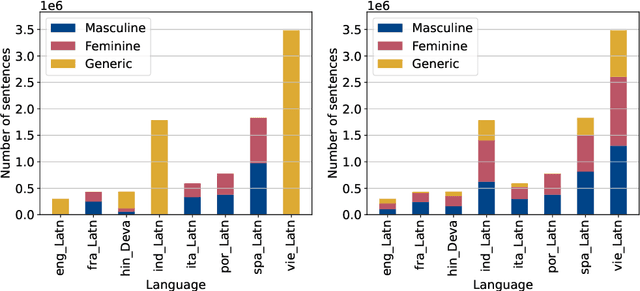
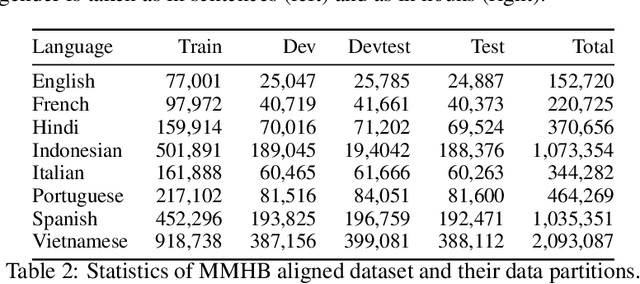
Abstract:In the current landscape of automatic language generation, there is a need to understand, evaluate, and mitigate demographic biases as existing models are becoming increasingly multilingual. To address this, we present the initial eight languages from the MASSIVE MULTILINGUAL HOLISTICBIAS (MMHB) dataset and benchmark consisting of approximately 6 million sentences representing 13 demographic axes. We propose an automatic construction methodology to further scale up MMHB sentences in terms of both language coverage and size, leveraging limited human annotation. Our approach utilizes placeholders in multilingual sentence construction and employs a systematic method to independently translate sentence patterns, nouns, and descriptors. Combined with human translation, this technique carefully designs placeholders to dynamically generate multiple sentence variations and significantly reduces the human translation workload. The translation process has been meticulously conducted to avoid an English-centric perspective and include all necessary morphological variations for languages that require them, improving from the original English HOLISTICBIAS. Finally, we utilize MMHB to report results on gender bias and added toxicity in machine translation tasks. On the gender analysis, MMHB unveils: (1) a lack of gender robustness showing almost +4 chrf points in average for masculine semantic sentences compared to feminine ones and (2) a preference to overgeneralize to masculine forms by reporting more than +12 chrf points in average when evaluating with masculine compared to feminine references. MMHB triggers added toxicity up to 2.3%.
Towards Red Teaming in Multimodal and Multilingual Translation
Jan 29, 2024Abstract:Assessing performance in Natural Language Processing is becoming increasingly complex. One particular challenge is the potential for evaluation datasets to overlap with training data, either directly or indirectly, which can lead to skewed results and overestimation of model performance. As a consequence, human evaluation is gaining increasing interest as a means to assess the performance and reliability of models. One such method is the red teaming approach, which aims to generate edge cases where a model will produce critical errors. While this methodology is becoming standard practice for generative AI, its application to the realm of conditional AI remains largely unexplored. This paper presents the first study on human-based red teaming for Machine Translation (MT), marking a significant step towards understanding and improving the performance of translation models. We delve into both human-based red teaming and a study on automation, reporting lessons learned and providing recommendations for both translation models and red teaming drills. This pioneering work opens up new avenues for research and development in the field of MT.
MuTox: Universal MUltilingual Audio-based TOXicity Dataset and Zero-shot Detector
Jan 10, 2024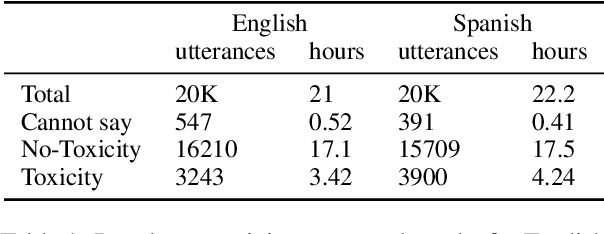
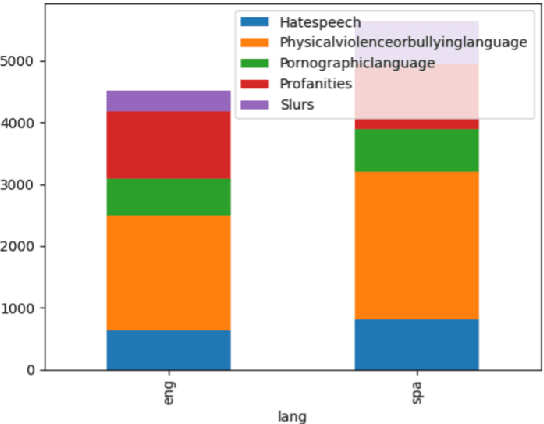
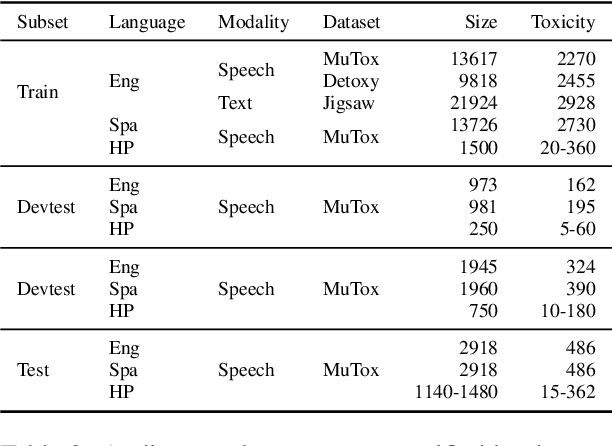
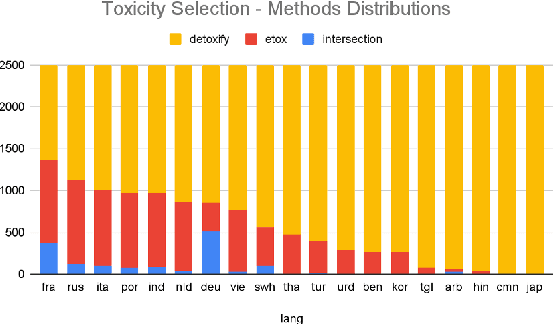
Abstract:Research in toxicity detection in natural language processing for the speech modality (audio-based) is quite limited, particularly for languages other than English. To address these limitations and lay the groundwork for truly multilingual audio-based toxicity detection, we introduce MuTox, the first highly multilingual audio-based dataset with toxicity labels. The dataset comprises 20,000 audio utterances for English and Spanish, and 4,000 for the other 19 languages. To demonstrate the quality of this dataset, we trained the MuTox audio-based toxicity classifier, which enables zero-shot toxicity detection across a wide range of languages. This classifier outperforms existing text-based trainable classifiers by more than 1% AUC, while expanding the language coverage more than tenfold. When compared to a wordlist-based classifier that covers a similar number of languages, MuTox improves precision and recall by approximately 2.5 times. This significant improvement underscores the potential of MuTox in advancing the field of audio-based toxicity detection.
 Add to Chrome
Add to Chrome Add to Firefox
Add to Firefox Add to Edge
Add to Edge